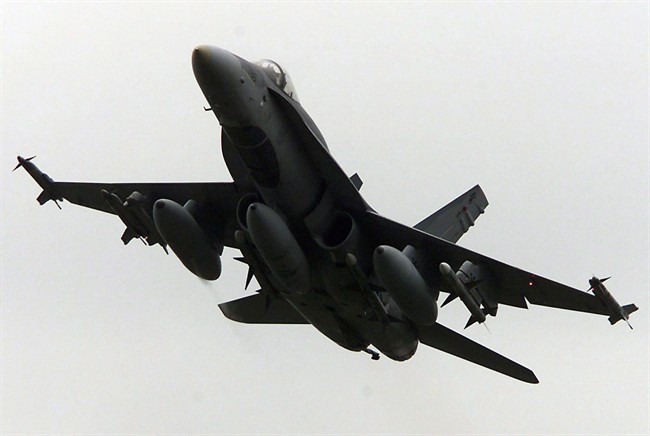OTTAWA – Companies vying to build the replacement for the air force’s aging CF-18s have cranked up the hard sell as the Harper government weighs whether to hold a full competition – or to stick with the troubled F-35 program.

Representatives Dassault Aviation and Eurofighter talked up the merits of their individual jet fighters this week at a major Ottawa arms trade show.
Not to be outdone, the U.S. manufacturer of the F-35, Lockheed Martin, and rival Boeing, the maker of the Super Hornet, set up glitzy high-tech simulators hoping to give participants a taste of what it’s like to fly their fast jets.
While all had praise for the nearly 18-month-long government review process, there was an underlying anxiety and hard-edge to each of the pitches.
Yves Robins, a senior vice president with Dassault, the French aircraft-maker, says the Conservative government’s recent overhaul of the military procurement system means federal officials would be hard-pressed to explain a return to the F-35 sole-source plan.
“I imagine that if the Canadian authorities will want to be consistent with what they are expressing in their projects, there is a good chance they will consider what the other options are,” he said.
Each of the companies will be anxious to hear from Public Works Minister Diane Finley, who is slated to address the conference today.
However, she is not expected to deliver any news on fighter replacements, according to several federal sources.
- Trudeau says ‘good luck’ to Saskatchewan premier in carbon price spat
- Canadians more likely to eat food past best-before date. What are the risks?
- Hundreds mourn 16-year-old Halifax homicide victim: ‘The youth are feeling it’
- On the ‘frontline’: Toronto-area residents hiring security firms to fight auto theft
Robins said that if there is a competition, it likely would be completed quickly because the secretariat overseeing the program has carried out extensive research and consultation with each of the rivals.
In December 2012, the Harper government suspended its plan to buy 65 F-35s following months of criticism and an auditor general’s report that accused National Defence and Public Works of failing to do their homework and low-balling the life-time cost of the radar-evading jets.
Subsequent independent reports suggest the price tag could hit $44 billion over four decades.
Officials from Boeing emphasized the cost certainty of their aircraft, saying that the Super Hornet has a proven maintenance and support track record.
Jeffrey Kohler, Boeing’s vice president of business development and a former U.S. Air Force pilot, said the fighter – a new, improved version of the CF-18 – is more rugged and better suited for Canada’s harsh climate.
Eurofighter, a British, German and Italian consortium, underscored the combat record and heavy weapons load that its Typhoon jet can carry.
Addressing the argument that Canada needs a plane that can operate jointly with the American fleet, former German air force pilot Joey Borkenstein emphasized how well the Eurofighter worked alongside U.S. aircraft during the air war over Libya.
Lockheed Martin was quick to point out that the F-35 was recently selected by South Korea as its next fighter.
“What we have is an aircraft that continues to win every single evaluation, analysis that it’s in,” said Steve O’Bryan, the company’s vice-president of business development.
“So, I’m confident that when the facts are provided in the (Canadian government’s plan), and the data is provided, that Canada will able to make an informed decision.”
The program has been beset with cost overrruns and development glitches.
But in a demonstration to assure the kinks were being ironed out, Rockwell Collins, a partner with Lockheed Martin, showed off the specialized F-35 helmet which gives the pilot an unobstructed, 365-degree, all-weather view of their surroundings.



Comments